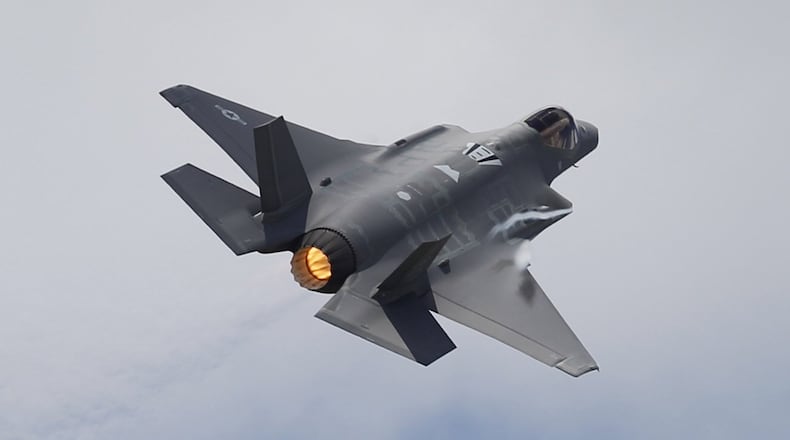When it comes to the technical muscle behind emerging Air Force technology, when Fookes speaks, people listen.
And lately, Fookes has been speaking more about digital technology and the transformation made possible by digital tools — digital interconnectedness, artificial intelligence, machine learning, digital material management and more.
On Wednesday, Fookes spoke at the opening of the University of Dayton’s Digital Transformation Center, a center meant to help Air Force and industry representatives better harness those tools.
Here’s some of what Fookes had to say in an interview with the Dayton Daily News at that event.
Dayton Daily News: In your public remarks just now, you pointed to the F-35 as an example of the Air Force’s need to harness digital transformation. Can you expand on that?
Robert Fookes: “What I meant by that is, it’s taken us 15 years to basically field a very complex, exquisite capability, fifth-gen(eration) fighter, the warfighting capability that is prominent today. It has taken the Chinese six-and-a-half years to accomplish similar things, their own fifth-gen-type fighter.
“Whether those capabilities are exact or not, the fact that they can put capability out there that much quicker gives them that much more time to perfect it, to do things with it.
Credit: Eric R. Dietrich
Credit: Eric R. Dietrich
“Therefore, when we start to look at new capabilities, let’s say the B-21, the Next Generation Air Dominance (fighter), those types of platforms, we’ve got to build them faster because that’s what’s going to keep pace with our adversaries. They continue to produce new capabilities as well. That’s where this great-power competition comes to a head.”
DDN: But at the same time, pilots love the F-35 and allies want it.
Fookes: “Great plane. It has nothing to do with the capability itself. It has everything to do with how quickly we need it, how quickly we need to be able to modify it, how quickly we need to be able to upgrade it, all of those things. If we’re continually slow on developing new capability, and they’re outpacing us on developing capabilities, and they’re outpacing us in a developmental capability standpoint, we’re not getting it out to the field fast enough. It has nothing to do with the quality of the airplane, the lethality of the airplane, all those things are great. It’s just taking us a lot longer to get there.”
DDN: And you see digital transformation as the tool to acquire that speed.
Fookes: “Absolutely. What it helps us do is, it decreases timelines, helps with decision-making, it gives us better insights into complexity, such as when you have a highly integrated complex platform — being able to see it and analyze it digitally, it takes a lot of effort away from trying to have to do it manually. It reduces those timespans so we can focus on building the capability versus engineering it and analyzing it.”
About the Author



